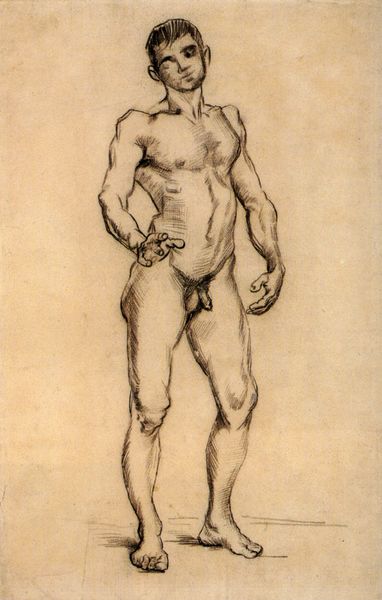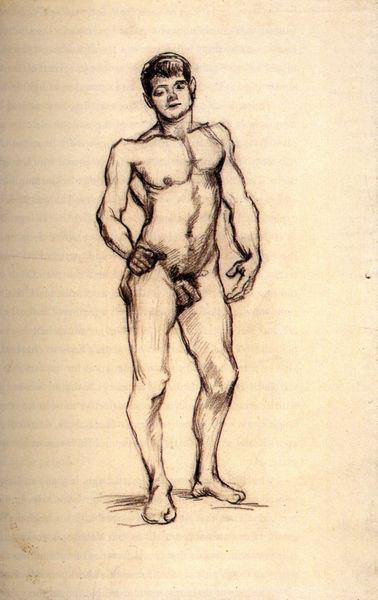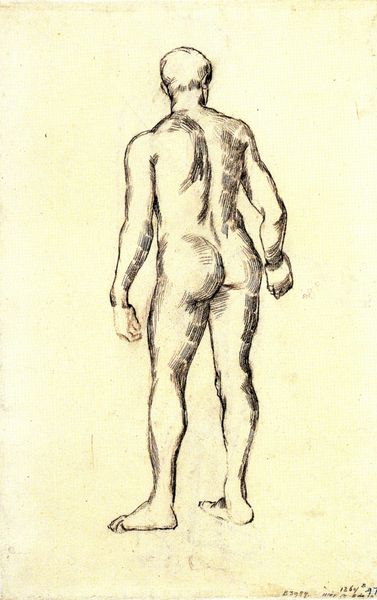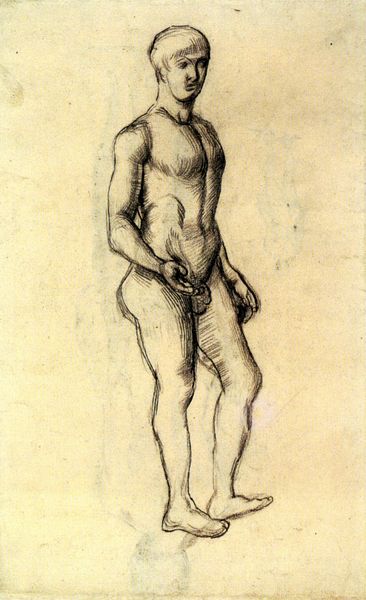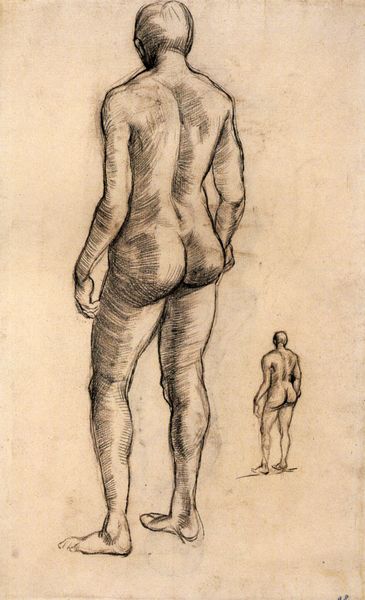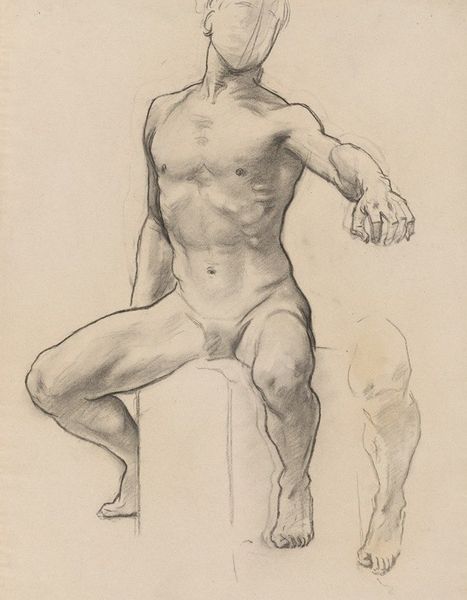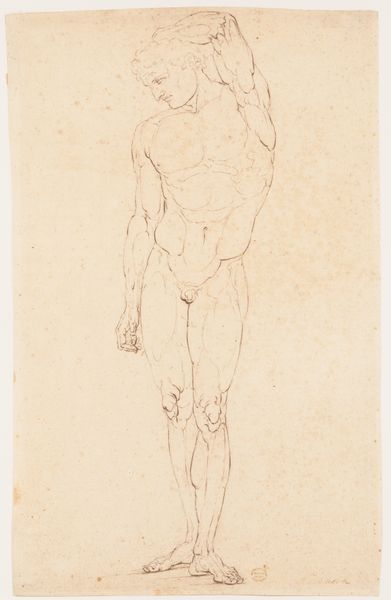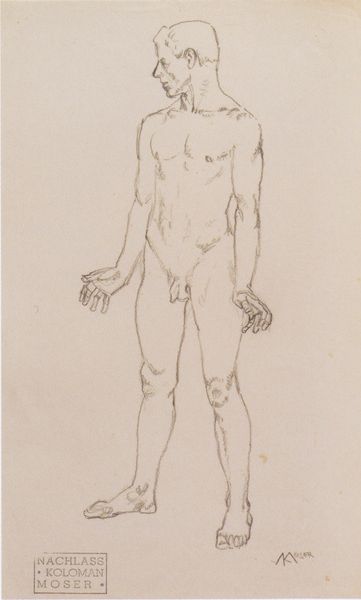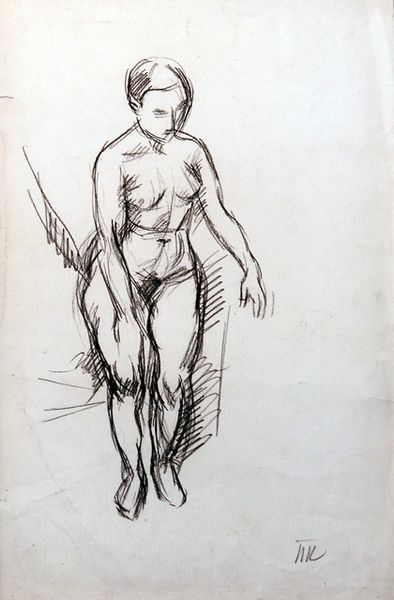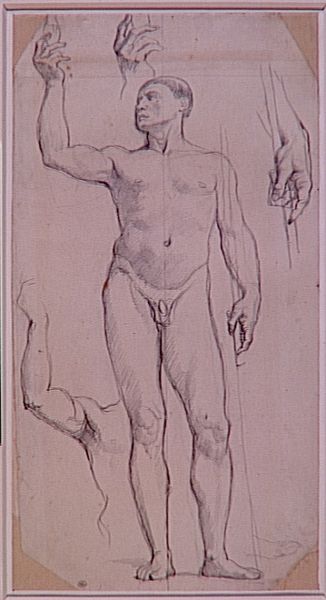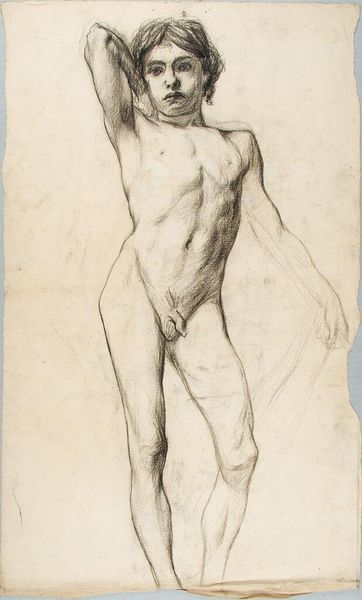
drawing, graphite
#
drawing
#
figuration
#
graphite
#
academic-art
#
nude
#
male-nude
Copyright: Public domain
Curator: Immediately striking. There's a sense of melancholy and perhaps even a subtle defiance in the pose. Editor: Indeed. Let's delve into "Idol," a graphite drawing created by Vincent van Gogh in 1886. Currently, it resides at the Van Gogh Museum in Amsterdam. Considering his later stylistic evolutions, this work reflects van Gogh's earlier academic approach, wouldn’t you agree? Curator: Certainly, the anatomical precision aligns with academic traditions, yet the figure transcends mere representation. One detects a vulnerability. The subject seems to be caught between embodying an ideal and expressing a lived reality. It invites reflection on societal constructs and expectations placed upon the individual, specifically the male form, within that era. Editor: I appreciate your interpretation. However, I'm compelled by the technique itself. Look at how Van Gogh uses hatching and cross-hatching to define the planes of the body, creating a strong sense of volume. There's a rhythm and dynamism to the line work. And the contrapposto stance, though subtle, enhances the feeling of movement and potential energy contained within this "idol." Curator: While the technique is certainly proficient, it is what the technique *communicates* that intrigues me. Considering his biography, van Gogh's struggles with mental health, and his later expressions of raw emotion, is it a stretch to see an undercurrent of that same conflict even here, constrained within this academically proper study? Editor: It is that tension, perhaps, which makes the artwork so interesting. He's observing the object while conveying its emotional complexity. Even its surface has visual variation. Curator: Precisely. It is not a neutral observation but an encounter laden with societal, personal and cultural meanings. It becomes a commentary on art-making and what it meant to capture reality then. Editor: Ultimately, whether you perceive it through a social, historical, or formal lens, “Idol” is proof of Van Gogh’s remarkable vision. Curator: Yes, "Idol," a mirror reflecting both the artistic conventions of its time and the simmering artistic rebellion within Vincent van Gogh.
Comments
No comments
Be the first to comment and join the conversation on the ultimate creative platform.
